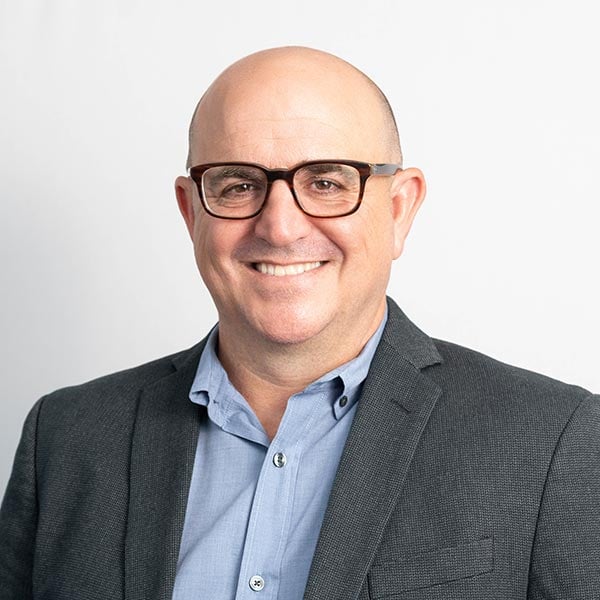Cocaine is dangerous on its own; however, buying cocaine from drug dealers can increase the risk as it is often cut with other agents to increase profits. Why is this dangerous? Because there is no ability to know what the drug is cut with, the consequences of using unknown substances can lead to overdose or sudden death.
Most cocaine purchased on the streets is cut with other drugs or substances. In 2017, the DEA reported the average purity level of seized cocaine was only 61.5%.
There are several different substances people use to cut cocaine. Examples include laxatives, caffeine, creatine, and laundry detergent. It is also possible drug dealers may decide to cut cocaine with other drugs such as marijuana, heroin, LSD, and PCP. This is dangerous as it can heighten cocaine’s effects or increase the likelihood of an overdose.
If you or someone you love has a cocaine use disorder, Guardian Recovery is available to help. We are dedicated to providing the most comprehensive and individualized medically monitored detox program. To learn more about our programs, contact us today.
Start Healing Today!
Choose recovery and take control of your life, it’s the path to a brighter future filled with health, happiness, and fulfillment.
Why Is Cocaine Cut With Other Agents?
Ultimately, cocaine is cut with other substances to increase the drug dealer’s profits and save money by using cheaper products. Cocaine is cut with other substances to change or intensify the effects of the drug. Changing the drug allows dealers to sell less of the actual cocaine for more money. Additionally, these cutting agents can change the texture, form, and color, making it easier to smoke, snort, or inject cocaine.
Common Substances Used for Cutting Cocaine
As mentioned, cocaine is cut or laced with other substances to sell more, extend the product, enhance the high, increase addiction, and reduce the bulk of cocaine. More than 60% of street cocaine is cut with other substances. This is dangerous because it leads to overdose, sudden death, and toxicity of unknown substances or interactions.
Common Substances When Cutting Cocaine:
- Laundry detergent.
- Laxatives.
- Caffeine.
- Boric acid.
- Local anesthetics.
- Creatine.
- Marijuana.
- Fentanyl.
- Heroin.
- LSD.
- PCP.
According to the Drug Enforcement Agency (DEA), levamisole comprised 69% of seized cocaine in the United States in July 2009. More recent reports estimate that the proportion of cocaine laced with levamisole may now be higher than 80%.
Levamisole is a veterinarian drug primarily used to treat worm infestations in livestock. It can lead to toxicity and death if someone has an adverse reaction to this drug.
Other Forms of Cocaine & Cutting Agents
There are various forms of cocaine, but all forms come from the coca plant found in South America.
Different Types of Cocaine:
- Pure cocaine- a white crystallized powder made from coca leaves, uncut with other substances.
- Crack cocaine-small rock chunks that contain cocaine and other substances. Intended to smoke.
- Synthetic cocaine-a drug created from other substances that looks similar to cocaine, typically more of an amphetamine.
- Pink cocaine-not technically cocaine, but a synthetic drug that looks like a pink powder. This drug should never be snorted and has lethal consequences regardless of how it is consumed.
- Black cocaine-a chemically altered form of cocaine. Typically a mix of cocaine, charcoal, and other chemicals.
- Fish scale cocaine-typically high-quality cocaine and uncut. This drug does not come in powder form but in small flakes.
- Cocaine hydrochloride- a salt form of cocaine. This drug is often cut with lidocaine, talcum powder, sugar, or cornstarch.
- Yellow cocaine-while fish scale may have a yellow or grey hue; quality cocaine is known to be white. Yellow cocaine is often sold as crack cocaine.
- Brown cocaine-impure crack cocaine. There is a rare type of cocaine only found in Africa known as “brown-brown,” which is cocaine mixed with gunpowder.
Complimentary Insurance Check
Find Out Today!
"*" indicates required fields
Cocaine Additives & Adulterants
Various types of chemicals are added for two primary reasons when cutting cocaine. The two groups are referred to as adulterants and additives. Adulterants enhance the quality of a drug by reducing cocaine’s purity. For example, adding caffeine is cheap for the seller, reduces the amount of actual cocaine used in the product, and improves the high for the buyer.
Additives create a similar outcome to pure cocaine and may reduce the overall bulk of cocaine.
For example, the seller may lace cocaine with other illicit drugs to create an intense high or add baking soda because there is no harmful effect and the substance looks similar to cocaine powder. The most successful adulterants are drugs that can enhance the impact of cocaine and also look identical to its physical appearance.
Freebase Cocaine
Freebase cocaine is created by removing salt from the original form, or the cocaine “base.” This makes cocaine more pure, potent and easier to smoke. People create crack cocaine by combining cocaine with baking soda and water, but to make freebase cocaine, they must extract the base with ammonia.
After freebase cocaine has been created, it no longer contains hydrochloride. Therefore, it goes from being a powder to being cocaine sulfate. This means that the cocaine is now nearly 100% pure. Cocaine can not be smoked in its original form but as freebase cocaine. It cannot be injected because it cannot be dissolved in water. People choose to create freebase cocaine because freebase cocaine can be a much more potent product.
Crack Cocaine
People may wonder what the difference is between crack and cocaine. Although crack and cocaine may look different to the naked eye, they are almost identical on a chemical level. Cocaine is generally a white powder, while crack is most frequently found in a crystalized rock form. In addition, there are some differences in how each drug is taken. Cocaine can be snorted, gummed, smoked, or injected, and crack can only be smoked. Because there are many forms of using cocaine, it is often more expensive than crack.
Cocaine Laced With Other Illicit Substances
Drug dealers may cut cocaine with other drugs such as marijuana, heroin, fentanyl, LSD, and PCP. This is dangerous as it can heighten cocaine’s effects or increase the likelihood of an overdose. According to the CDC, cocaine was involved in nearly 1 in 5 overdose deaths in 2019. Additionally, 16,000 Americans died from overdoses involving cocaine.
Can Cut Cocaine Be Recognized or Tested?
There are fentanyl test strips available to test if a drug has been cut or laced with fentanyl. These are inexpensive and extremely important as fentanyl is nearly impossible to tell if it is laced in drugs as there is no detectible odor, taste, or visual appearance. Fentanyl is 50x more potent than heroin and 100x stronger than morphine. Finding a way to test for certain substances can be a matter of life or death.
Dangers & Risks of Cocaine Cut With Agents
More likely than not, street drugs will be cut with an unknown agent. This is extremely dangerous because there is no way to know what substances are added, there are no regulations for drug dealers to follow, and there ultimately will be harmful additives and interactions that occur.
Unknown Cutting Agents
There is no way of knowing what substances are added or cut with cocaine. According to the DEA, the average purity level of street cocaine was only 61.5%. Additionally, cocaine laced with levamisole may now be higher than 80%. Fentanyl overdoses involving cocaine continue to rise and contribute to the 16,000 overdose deaths related to cocaine in 2019.
No Set Standards
There are no set standards, regulations, rules, or reasons for drug dealers to provide safe and quality substances for their customers. The unfortunate fact is that drug dealers are motivated by profit to sell large quantities of substances, and it benefits them to cut products with cheap additives than, to be honest, or upfront.
Potentially Deadly Additives & Interactions in the Body
The reality is that most of the time, cocaine is laced with highly toxic, addictive, potent drugs. Fentanyl is deadly. Levamisole is toxic. Cocaine all on its own is extremely dangerous, let alone mixing cocaine with unknown substances can cause extreme bodily interactions.
Signs of Overdose:
- Small, pinpoint pupils.
- Falling asleep, losing consciousness.
- Slow, weak breathing.
- Choking or gurgling sounds.
- Limp body.
- Cold, clammy skin.
- Discolored skin, lips, and nails.
Our Locations
Our Facilities & Teams Transform Lives
Changing lives by providing comprehensive support and rehabilitation, empowering individuals to overcome addiction and regain control of their health and well-being.
Call to Learn More
At Guardian Recovery, we remain dedicated to providing our clients with a comprehensive program of cocaine detox — one that focuses on much more than physical stabilization. In addition to emphasizing physical recovery, we tackle mental, emotional, and spiritual well-being. While we prioritize a safe and pain-free cocaine withdrawal, we offer individual, group, and family therapy sessions, case management services, relapse prevention training, and aftercare planning.
Contact us today if you or your loved one is ready to begin an entirely new way of life and commit to long-term recovery. As soon as you call, we start developing a plan of action that begins with an initial pre-assessment. This assessment helps us determine which level of care is the most appropriate for each unique case. We identify potential coverage options if our medically monitored detox program is a good fit. We work closely with most major regional and national insurance providers. Contact us today for a free, no-obligation insurance benefit check.
SELF-ASSESSMENT:
Do I have an Addiction issue?
Disclaimer: Does not guarantee specific treatment outcomes, as individual results may vary. Our services are not a substitute for professional medical advice or diagnosis; please consult a qualified healthcare provider for such matters.
- https://docs.google.com/viewer?url=https%3A%2F%2Fwww.dea.gov%2Fsites%2Fdefault%2Ffiles%2F2020-01%2F2019-NDTA-final-01-14-2020_Low_Web-DIR-007-20_2019.pdf
- https://www.ncbi.nlm.nih.gov/pmc/articles/PMC6474566/
- https://www.cdc.gov/drugoverdose/deaths/other-drugs.html
- https://www.cdc.gov/stopoverdose/fentanyl/index.html









